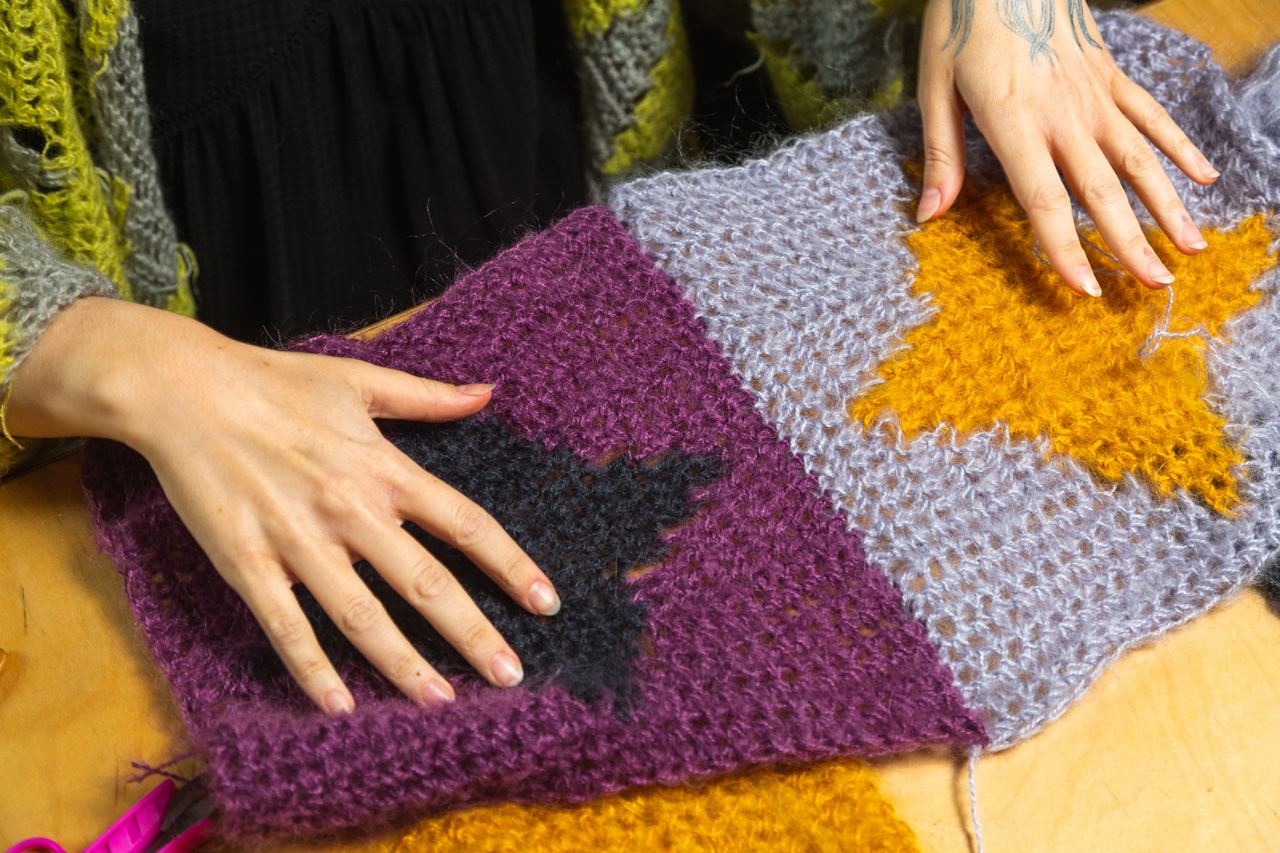
10—15 ДЕКАБРЯ / МАСТЕРСКАЯ АРТ-РЕЗИДЕНЦИИ «ЗАРЯ» (ЦЕХ ЦРМ, ВХОД 4)
10 ДЕКАБРЯ / 17:00—20:00 / ОТКРЫТИЕ ИНСТАЛЛЯЦИИ
17 ДЕКАБРЯ / 18:00—20:00 / ПЕРФОРМАНС «НАИТИЕ»
- Авторские экскурсии: 11 декабря в 15:30 и 16:00
- Вход свободный. Для посещения обращайтесь на ресепшн ЦСИ «Заря»
Для Миланы Пестеревой нет существенных различий между воображением и реальностью — реальность в ее графических работах часто расширена до пространства космоса и в целом сосредоточена на дуализме повседневного и вымышленного. Художница распаковывает свойственную ей экспрессивность, часто повторяя в своих графических и живописных работах мандорлу — миндалевидной ореол, символизирующий выход за пределы формы, плоскости и материи. Милана изображает мандорлу в виде большого взрыва, в стилистике, граничащей с поп-артом. Еще один часто встречающийся символ в ее работах— четырехконечная звезда, символизирующая стороны света. Сама художница объясняет ее значение следующим образом: «Четыре стороны света -> Планета Земля -> Земное существо -> Человек -> Компас -> Поиск верного пути -> Сияние».
Другой элемент ее работ — дневниковые зарисовки в графике о бытовых и природных ситуациях, существующих на грани реальных событий и сна, например, о разрушенных тайфуном мостах или полетах над деревней. А сами материалы, с которым чаще всего работает художница — пастель и пряжа,— задают мягкость и неуловимость высказывания.
Художница любит наблюдать за судьбой своих произведений: так, платок с вышитыми колокольчиками был перевезен ею в тайгу на севере Приморского края и стал привлекать крупных бабочек, которые извлекают своими крыльями из платка звуки, а помещенное в лес сотканное платье с вышитыми стихами ее друзей заинтересовало птиц, которые постепенно выклевывали из него пряжу, унося с собой часть работы.
Сегодня Милана Пестерева находит вдохновение во взаимодействии с коллегами по группе ДВР, уехавшими в село Горноводное на севере Приморского края для создания там пространства «радостного со-бытия и веселия сердца». В глуши таежной резиденции Пестерева практикует коллективное существование в обустраиваемом доме, постепенно засеивая огород и не оставляя ни на день рисование и вязание. Ручной труд помогает художнице«заземлиться» и почувствовать ход времени.
Идея связать крючком дом в натуральную величину, с которой Милана пришла в резиденцию «Заря», зародилась по той же причине любви к ручному труду. Художница преобразит пространство мастерской в вязаный дом, который после завершения проекта будет трансформирован в серию функциональных объектов: его стены можно будет буквально примерить на себя — в качестве одежды. Так созданное из пряжи убежище для уединения становится соизмеримым с человеческим телом и сливается с ним. Дом, который можно надеть на себя, полон цветовой экспрессии и орнаментов из повторяющихся геометрических форм. В своей предельной ограниченности форм и цвета вязаный дом Пестеревой отсылает к«Триадическому балету» Оскара Шлеммера и к традиции использования цвета в костюмах для танцев. Наследие Баухауса (немецкой школы дизайна, где преподавал Шлеммер) подсознательно выкристаллизовывается в междисциплинарности художественного высказывания Пестеревой, в ее игре с (дис)функцией объектов и в коллективном подходе к своей практике.
Экспозиция одежды, в которую превратится инсталляция с домом 17 декабря, будет представлена зрителю через неделю после выставки «Домик у реки». Посетителя ждет перформанс, где художница предстанет в тотальном коконе одежды и будет присутствовать до последнего посетителя.
- Справка:
Милана Пестерева (Чарая) (род. 1997, Владивосток) — художница. Окончила Владивостокское художественное училище (2016). С 2017 года — участница Владивостокской школы современного искусства (ВШСИ), с 2019-го — художественной группы ДВР. С апреля 2022 года живет и работает в таежной резиденции, созданной группой ДВР в поселке Горноводное на севере Приморского края.
Избранные персональные выставки: «Чарая» (галерея «Арка», Владивосток, 2020), «Солнце встает, и солнце садится» (совместно с Елизаветой Козловской-Каганской; галерея «Арка», Владивосток, 2021). Избранные групповые выставки: «Весна блаженная» (Центр современного искусства «Заря», 2019), «О чем поют русалки» (Центр современного искусства «Артэтаж», Владивосток, 2021), «Семь планов солнечной системы» (галерея «Коробка», Владивосток, 2021), Fun is over (самоорганизованная галерея Fun is over, Владивосток, 2021), II Иркутская молодежная самоорганизованная горизонтальная микробиеннале 3(2) дня (2021), «Свадьба ДВР» (павильон на Морском вокзале, Владивосток, 2021), «Александр Городний сейчас полон надежд» (павильон «Третьяковка в движении»,Владивосток, 2021), «Она была красива как русский пейзаж» (Музей современного искусства PERMM, Пермь, 2022) и др. Участница проекта «В единственном экземпляре» (в составе группы ДВР) Музея современного искусства «Гараж» (Москва, 2021). Лауреатка Всероссийского конкурса в области современного искусства «Инновация» в номинации «Новая генерация» (в составе группы ДВР; 2020).
ВХОД СВОБОДНЫЙ
Текст: Яна Гапоненко
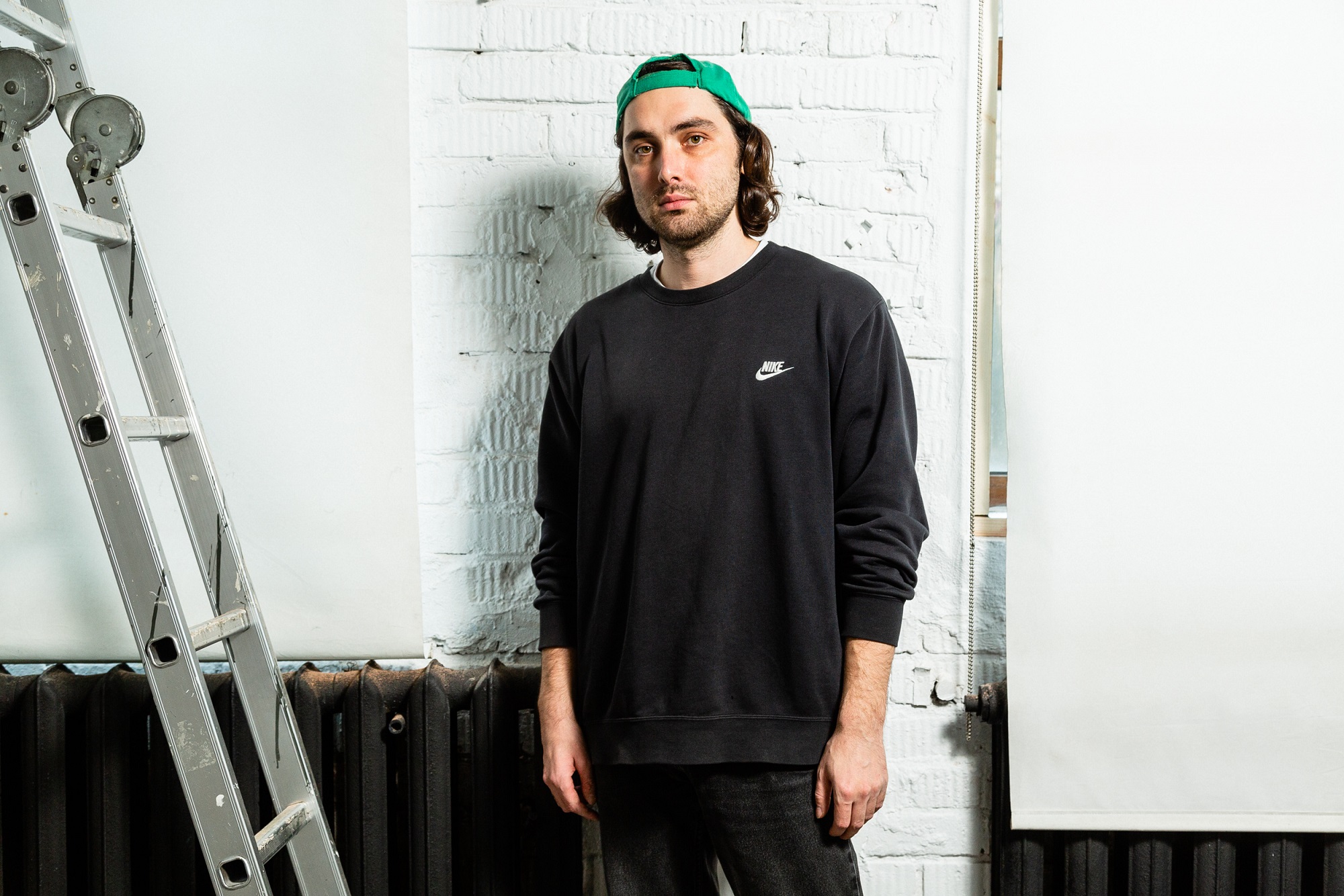
3—8 ДЕКАБРЯ / МАСТЕРСКАЯ АРТ-РЕЗИДЕНЦИИ «ЗАРЯ» (ЦЕХ ЦРМ, ВХОД 4)
3 ДЕКАБРЯ, 18:00—20:00 / ОТКРЫТИЕ ВЫСТАВКИ
- Авторские экскурсии: 4 декабря в 15:00 и 16:00
- Для посещения обращайтесь на ресепшн ЦСИ «Заря»
Графика Миши Чансы — это шрифтовые каллиграфические композиции, сделанные чаще всего черным маркером на белых листах и состоящие из абстрактных символов, выстроенных в линию или квадрат. В арт-резиденции «Заря» художник создаст новую серию плакатов и светотеневую инсталляцию.
В прошлом Миша Чансы — печатник и верстальщик, много работавший с разными типами оформления текстов, поэтому теперь он воспринимает любой текст блоками, в которых для него важен воздух между буквами и пустота между абзацами. Мишу интересует не значение конкретного символа (буквы или иероглифа), а его форма. Художнику также важно ощущение тела в движениях руки при письме. В скорости, с которой он создает свои работы, автор опирается на механику автоматического письма.
Петроглифы, сохранившиеся на Дальнем Востоке, могут стать ключом к пониманию произведений владивостокского автора. Однако Миша Чансы не апроприирует эстетику петроглифов, но создает собственные образы,в которых стерта принадлежность к тому или иному времени и месту, культурному коду и идентичности. Система знаков Чансы, с одной стороны, не несет в себе информации и не является шифром, с другой стороны, в силу своей архетипичности может быть интерпретирована как некое универсальное сообщение или как игра с различными культурными системами (такими как письменность).
Увлечение печатной графикой и рефлексия о ее материалах и методах — как и желание поддержать соратников — привели Чансы к идее собственного издательства«Fun is over press», которое помогает приморским художникам выпускать постеры и зины. Работа оформителем выставок в Музее истории Дальнего Востока им. В.К. Арсеньева также влияет на художника, но, по его собственным словам, он стремится смотреть меньше объектов, чтобы насмотренность не влияла на его практику художника.
Результатом арт-резиденции в «Заре» станут новая серия постеров и светотеневая инсталляция, в которой изображения, созданные Чансы при помощи трафаретов, проецируются на стены мастерской, заполняя ее пустоту. Это своего рода театр теней, в котором вакуум темноты взламывается при помощи света.
- Справка:
Миша Чансы (настоящее имя — Михаил Чувакин; род. 1990, Большой Камень, Приморский край) — художник, куратор. Окончил факультет психологии Дальневосточного государственного университета (Владивосток). Создатель мастерской шелкотрафаретной печати OTETZ (2012–2019). С 2020 года — художник-декоратор, технолог выставок в Музее истории Дальнего Востока им. В. К. Арсеньева (Владивосток). В 2020 году в Центре современного искусства «Артэтаж» (Владивосток) состоялась персональная выставка Михаила «Fun is over». В 2021 и 2022 годах был куратором и участником выставки графики «Fun is over 2.0» в одноименном пространстве во Владивостоке и выставки Atavistic в галерее «Арка» (Владивосток). В 2022 году участвовал в групповой выставке «Она была красива как русский пейзаж» (Музей современного искусства PERMM, Пермь). Живет и работает во Владивостоке.
ВХОД СВОБОДНЫЙ
Текст: Яна Гапоненко
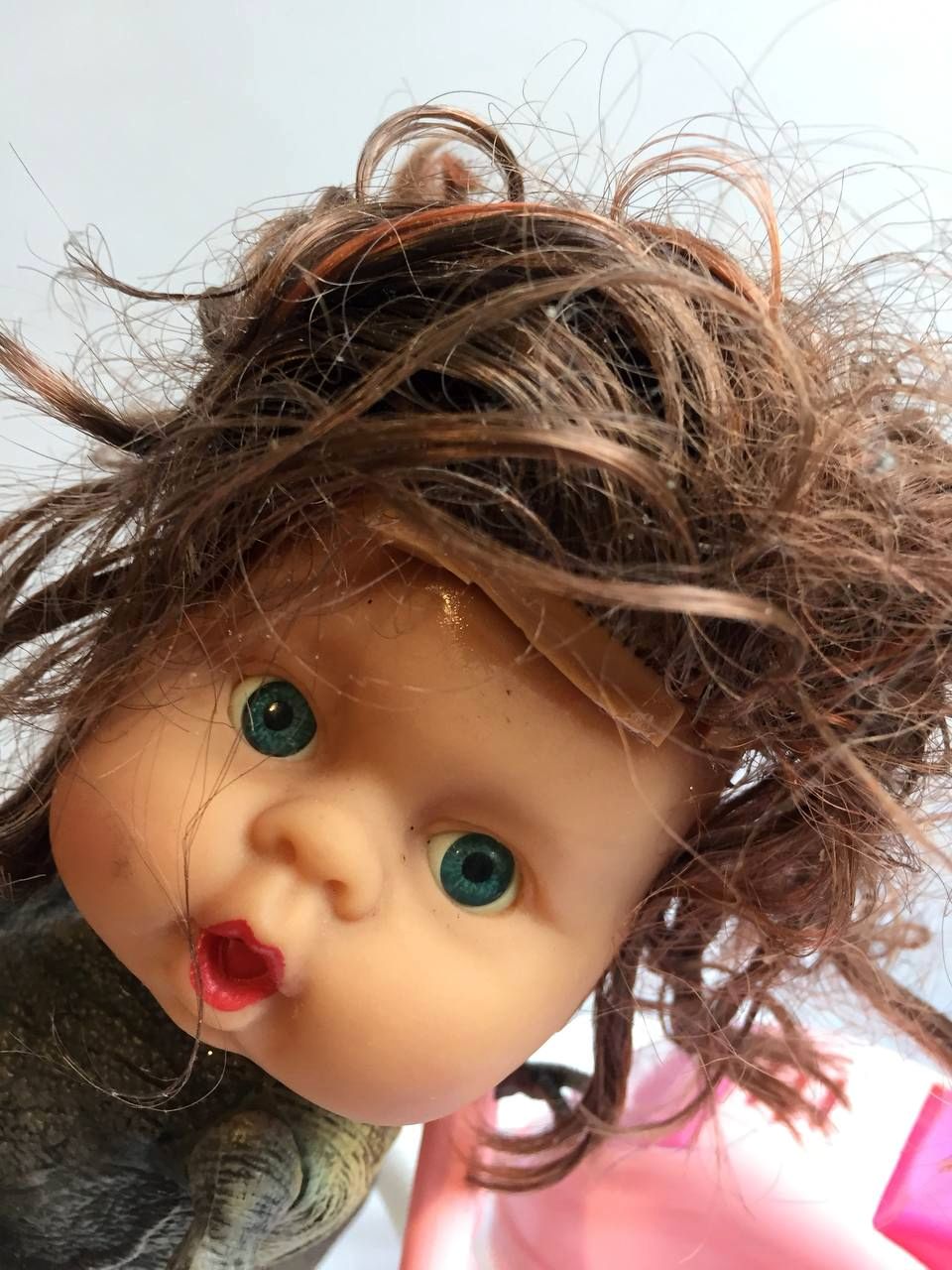
21 МАЯ – 3 ИЮЛЯ 2022 / ЧИТАЛЬНЫЙ ЗАЛ
Лёха Гоминид – владивостокский музыкант и художник, работающий с найденными объектами, ассамбляжем, компьютерной графикой «лоу-фай» и зарисовками с натуры, запечатлевающими абсурдность повседневности. Впрочем, слово «художник» не вполне применимо к нему – сам он именует себя «поделочником», или «подделочником», отвергая таким образом саму систему современного искусства, в которую не собирается встраиваться.
Собственно, «поделки», или «подделки» – одна из самых больших его серий, которая представляет собой ассамбляжи из выброшенных игрушек. Сопровождаемые подписями, они складываются в небольшие композиции, повествующие абсурдные истории.
- Рецензия на выставку от Антрисольского Г.И. (орфография и пунктуация автора сохранена).
Плод воображения, представляемый в ближайшем обозрении как круг всеобъемлющей гордости и предубеждения, показывает нам всю уязвимость потока времени, так часто упоминаемый в романе Р. Карцева «Облака забинтованные». В этот раз корень преткновения обусловлен лежащим камнем, под который не течёт вода. А также ножницами и бумагой, вечно побеждающими или побеждёнными, в зависимости от уровня загрязнения водоёмов с квакшами по-португальски. Нарочито вывешенный за окно лозунг «Я за всё» мешает воспринимать реальность как данное, ибо нельзя повернуть вспять историю с её мимолётными поворотами вокруг своей оси и не наделать шума в узких кругах. Наскоком выманенный из своего логова волк не хочет жить правдой, а хочет быть желанным для своих охотников, но не в качестве трофея, а в составе группы по обезжириванию кефира и доскональному осмотру у врача высшей категории. Истинны ли твои мотивы, когда ты хочешь постигнуть вопросы бытия, не предаваясь при этом законному праву на двоеродие? Нет, не будет сейчас думать о плохом качестве водопроводной воды. В ней нет никакого смысла, если ты не лежишь на траве и не смотришь в небо, где возможно повторение сценария от 05.03.06.
Антрисольский Г.И.
Все события и герои вымышлены. Любые совпадения случайны.
Лёха Гоминид – руководитель Студии всего «Цезарь и Тренога». Представлял персональные выставки в галерее «Арка» (2017) и «Артэтаж» (2022). Участник групповых выставок, в числе которых «Высота 611» (ЦСИ «Артсерватория», 2019), «Трагедия в углу» (Музей Москвы, 2018), «Рядом с небожителями» (галерея ARTIS, 2017), «Край бунтарей» (ММСИ, 2017, Музей Эрарта, 2016, ЦСИ «Заря», 2015).Участник 2-й Триеннале российского современного искусства (Музей «Гараж», 2020), выставка номинантов Zverev Art Prize (ЦСИ «Винзавод», 2021). Работы находятся в коллекциях Московского музея современного искусства, ЦСИ «Заря», галереи «Арка», ЦСИ «Артэтаж», в частных коллекциях.
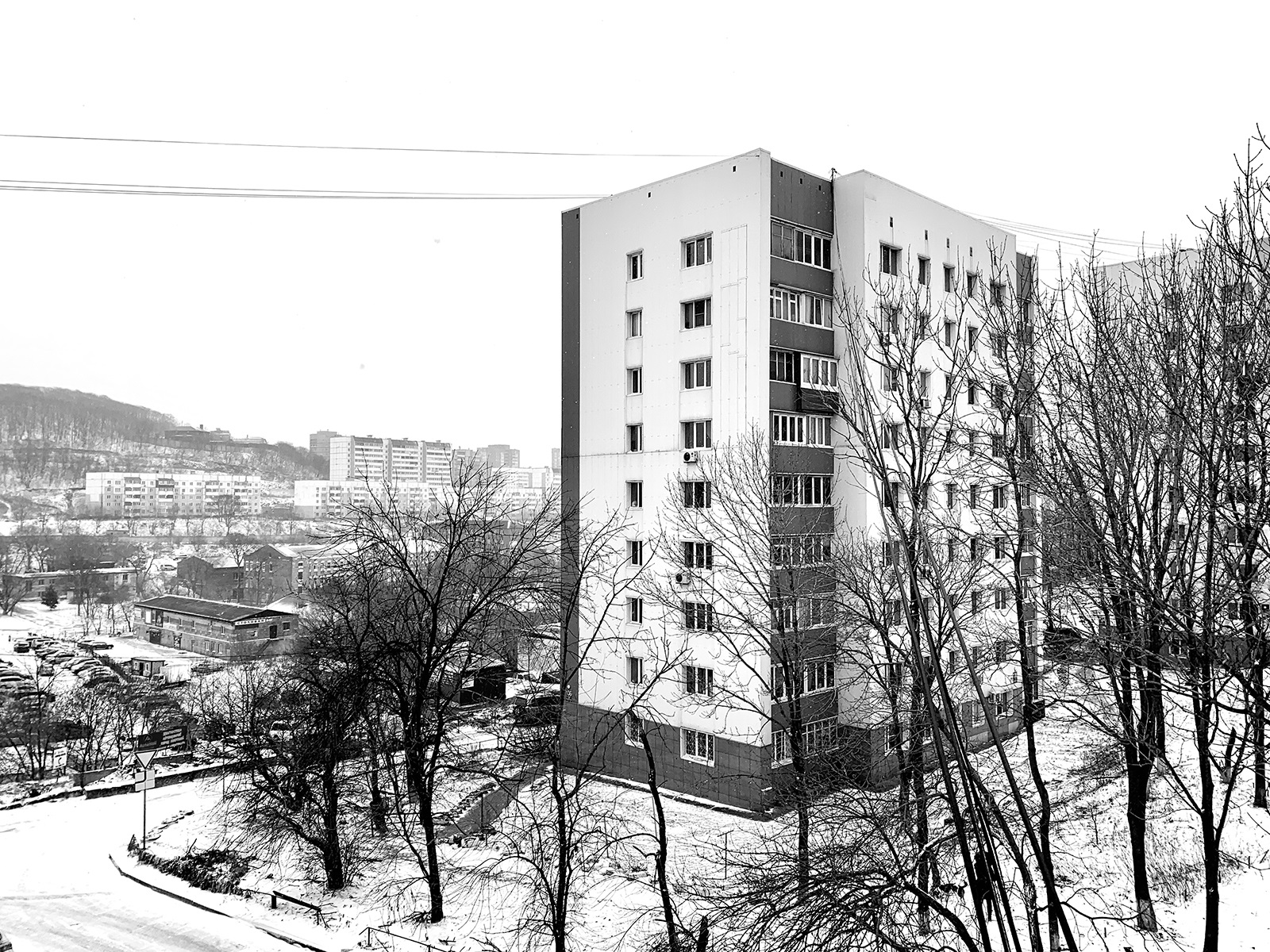
15–25 ЯНВАРЯ / 19:00 / ЧИТАЛЬНЫЙ ЗАЛ
В среду, 15 января, состоится презентация резидентской выставки Йен Хуа Ли «Следы памяти». В своих работах художница пытается объяснить, как происходит процесс обучения, сам феномен памяти и забвения через психологию и концепции визуального искусства.
Йен Хуа Ли исследует местность и культурные особенности Владивостока. В Центре современного искусства «Заря» она создает инсталляции, представленные многочисленными визуальными элементами, с помощью которых изучает взаимоотношения между людьми и их домом и определяет их «следы памяти».
ВХОД СВОБОДНЫЙ
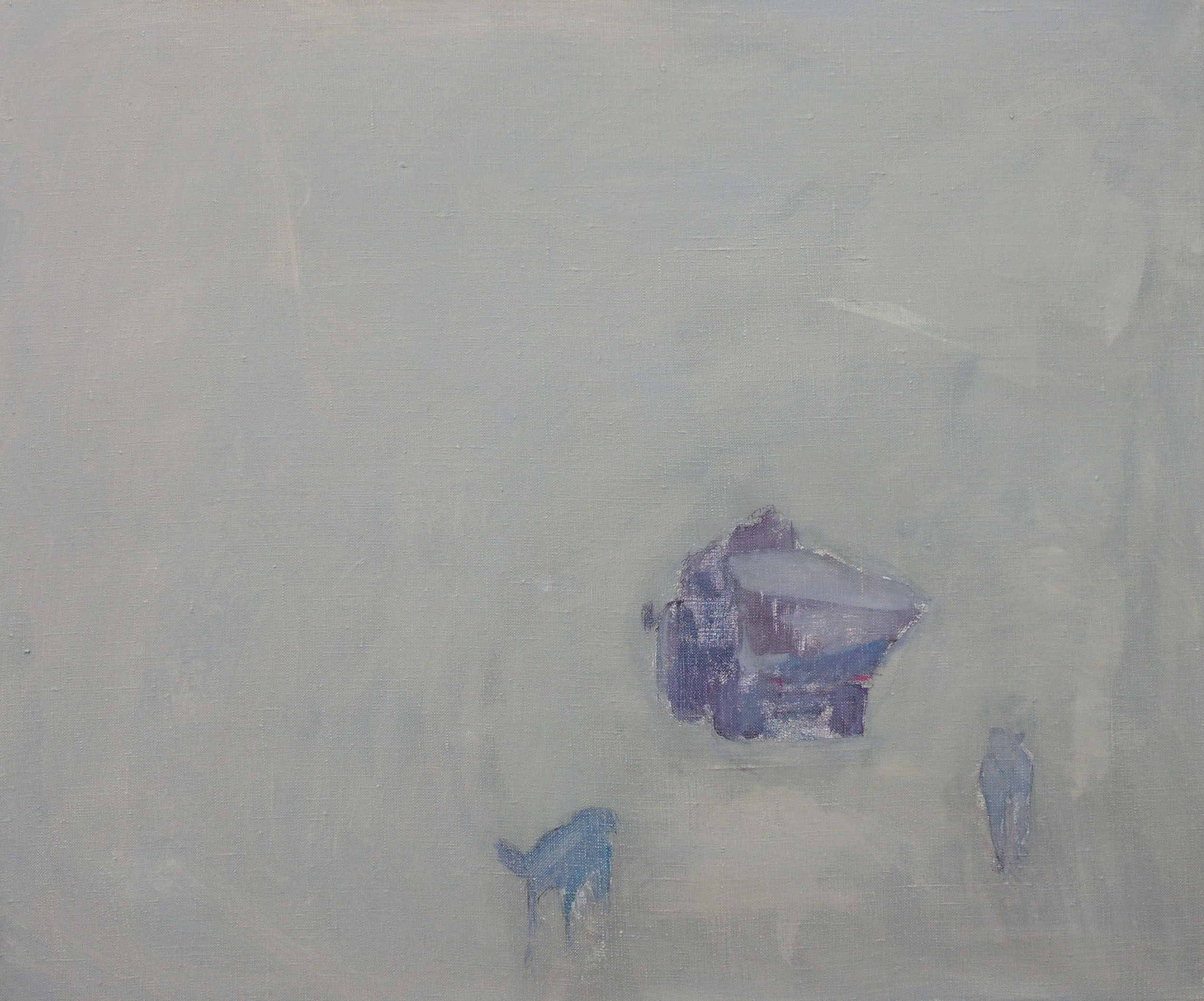
В мастерской арт-резиденции доступна для посещения выставка Николая Алексеева «Там тоже холодно и пусто, как здесь».
«“Там тоже холодно и пусто, как здесь” – это фраза совы, которая обманывает перелетных птиц из удэгейской сказки. Не очень понятно, где находятся эти "там" и "здесь", так же обстоит дело и с работами на выставке. Стоит отметить, что это не совсем выставка, а скорее набор отдельных живописных работ, которые я успел сделать за то недолгое время, пока был в резиденции. Там и здесь в работах присутствует пространство, часть изображений созданы по мотивам прогулок по Владивостоку и его окрестностям, а часть отсылает к увиденным пейзажам и объектам в Ялте и Таганроге в разные годы.
Две одинаковые формы пчелиных сот – это перерисованная странная находка на мусорке. Удивительно, что я случайно нашел похожие формы в родном Воронеже, а затем уже здесь, во Владивостоке. На небольшом видео, которое больше похоже на отчет о поездке «для бабушки», смешиваются зарисовки с Зари, Шаморы, Русского острова, переплетаясь с видео из Youtube – моего первого знакомства с Уссурийским заливом, где лодочное путешествие заканчивается ошибкой видеокодека, и летящая птица проваливается в цифровой шум. Также на видео присутствует фраза “На прошлой неделе шел снег”, но не очень ясно, когда была эта неделя. Вместе с навязчивым повторением живописных сюжетов, размытостью форм и цветов она отсылает нас к непостоянству памяти, где реальные и цифровые путешествия смешиваются в один временной поток», – рассказывает художник.
Вход свободный. Для посещения обращайтесь на ресепшн.
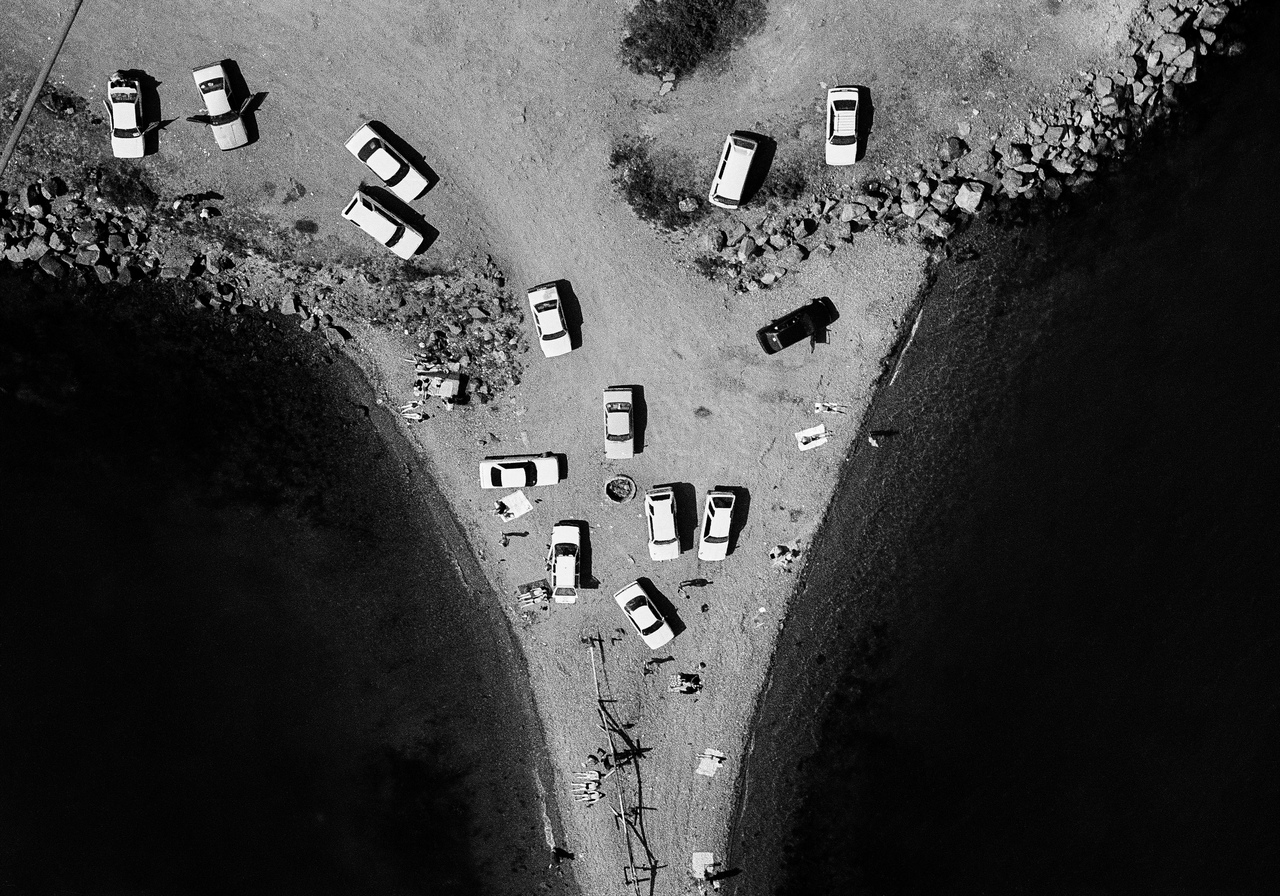
NOVEMBER 15, 2019 – MAY 17, 2020 / MAIN EXHIBITION HALL
On November 15, the Zarya Center for Contemporary Art will open the exhibition “Far Focus. Photographers of Vladivostok,” which includes approximately 400 photographs of Vladivostok from the 1970s until the present. The project is the first to offer such a sweeping retrospective alongside the cutting edge of contemporary photography in the city.
“Many regional photography schools – from Petersburg, to Kazan, to Novokuznetsk – have been shown in Russia in exhibitions or printed in albums and catalogues,” explains ZARYA CCA Chief Curator, Alisa Bagdonaite. “At the same time, in many cities and even entire regions, photographic practice remains almost undetectable or too little known in Russia and the world. ‘Far Focus’ is our attempt to use the medium of photography to understand and represent what it means to live in Primorye, and how Vladivostok artists and reporters look at their home.”
The photographs presented in this exhibition capture life in the big city and its surrounding countryside, exploring different methods and means of “looking at” reality and manipulating images.
“The project ‘Far Focus’ has turned out to be quite an important experience for me,” explains curator Anna Petrova. “During my curatorial residency and through conversations with photographers, artists, gallerists and museum professionals while in residence in Vladivostok, I managed to build up a sizable database of contacts, as well as assemble an archive of photographs. This material was so unexpected and interesting, both formally and from an anthropological point of view.”
Zarya’s eight galleries will feature the broad diversity of genres and regimes of looking engaged by the photographers of Vladivostok: from the “portraits of industry” and the landscapes of the Far East, to architectural shots and artistic experiments. The portrait remains the most popular genre for photography, offering a tool to represent others, whole classes and strata of society, and, at the same time, also find and discover yourself. Georgy Khrushchev’s photographs of the factory Dalpribor, reportage by Alexander Khitrov, and Gleb Teleshov’s series fix on images of labor and minority communities. In works by Ivan Speransky, Alexey Korotkov, and Vladimir Shutafedov, commercial and fashion photography alternates with documentary chronicles from sites of labor, and the usual models are replaced by circus jugglers and acrobats, cobblers and shoemakers.
The urban landscape of Vladivostok is reconstructed through the panoramas and architectural shots of Elena and Alexander Melnikov, while the massive residential blocks built during the eras of Khrushchev and Brezhnev tap into an unexpected poetic dimension in the pictures of Sergey Orlov.
The collective body of the city and its group identity are explored in a section on “Holidays and Rituals,” which includes the Shrovetide rituals of Maslenitsa and May 1, Communist rallies and religious processions. These celebrations catalogue a range of moods and means of communicating, from strictly regulated, to spontaneous, to utterly unbound.
Often staged or experimenting with techniques of shooting, developing or printing, artistic photographs form the crux of the thematic and conceptual series by Mikhail Pavin. The ideals of nonconformism and alternative perspectives are developed in the frames of Sergey Drobnokhod and Sergey Kiryanov. A separate section of the exhibition is dedicated to images taken by smartphones, snatching fragments of “faces and places,” looks and gestures, color and textures, bringing life in the city even closer to the observer, the flâneur and the viewer. In this field of “street photography” you find Denis Korobov, Maria Babkova and Instagrammers Pavel Nemtin and Leonid Zvegintsev.
In total, the exhibition includes works from 19 photographers: Maria Babkova, Sergey Drobnokhod, Alexander Khitrov, Georgy Khryshchev, Sergey Kiryanov, Evgenia Kokurina, Denis Korobov, Alexey Korotkov, Yury Lugansky, Elena and Alexander Melnikov, Pavel Nemtim, Sergey Orlov, Mikhail Pavin, Vladimir Shutafedov, Ivan Speransky, Gleb Teleshov, Yury Yarotsky and Leonid Zvegintsev.
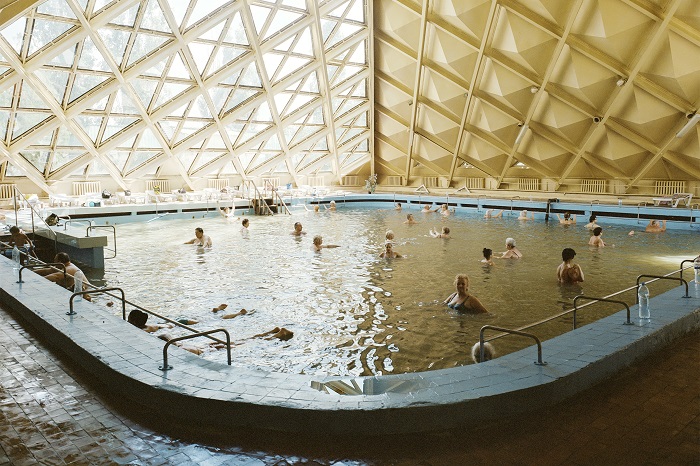
NOVEMBER 15, 2019 – JANUARY 12, 2020 / SMALL EXHIBITION HALL
On November 15, the Zarya Center for Contemporary Art will open the exhibition of photographs “Water Architecture: The Experience of Immersion,” which will transport viewers to the world of the resorts and health spas of the Soviet Union and Russia, including Primorye.
Curated by Anna Petrova, “Water Architecture: The Experience of Immersion” brings together photographs of two different epochs – the Soviet and Post-Soviet. On view will be the works of the father and son duo, Michael and Igor Churakov, Claudine Doury, René Fietzek, Olya Ivanova, Georgy Khrushchev, Daniel Kolchanov, Dmitry Lookianov, Ivan Mikhalov, Igor Mukhin, Egor Rogalev, alongside Michal Solarski, and Anatoly Topuz.
In the Soviet Union, sanatoriums, resorts, and spas took over the former residences and palaces of the tsars. A few were built in the 1930s, leading to a mix of both avant-garde and neoclassical. After World War II, recreational architecture – both buildings for cultural recreation and the care of one’s health – was designed by Modernist architects, whose no-frills approach relied instead on innovative (often to the point of bordering on the absurd) forms.
Back then all these new structures were captured in photographs: father and son, Michael and Igor Churakov, whose archive is today part of the collection of the Shchusev Museum of Architecture, traveled around the far corners of the country, photographing residential housing and administrative buildings. The reporter Anataly Topuz, meanwhile, canvassed the health centers: his color photographs of physiotherapy bear witness to the technical equipment in these facilities, while tapping into the almost surreal atmosphere of the medical interventions into the organisms of Soviet citizens.
In today’s capitalist society, the legacy of the Soviet sanatoriums seems to offer an oasis of prosperity. Having researched the system of the recreational industry in the USSR, British journalist Maryam Omidi produced a book with photographs of health resorts in Russia and Belarus, the Crimea and the Caucasus, Central Asia and the Baltics. Many of the photographers she enlisted to document her case studies took the initiative to continue the research around these spas themselves.
It is this body of photographs that constitute the bulk of the second chapter of our exhibition. Claudine Doury, René Fietzek, Michal Solarski, Dmitry Lookianov, Olya Ivanova and Egor Rogalev contribute images both of modernist architecture, with its trademark silhouettes and interiors, and the moods and expressions on the faces of the people undergoing the physiotherapeutic treatments. Relaxed or concentrated, enduring their discomfort or just plain passed out, the protagonists in these photos are of interest, both aesthetically and anthropologically.
Another chapter of the exhibition focuses on the “Water Architecture” of Primorye, Caucasus, Moscow and the Volga. Selected photographs from Igor Mukhin’s series “Week-end,” Olya Ivanova’s portraits of women at the legendary Chaika, an open-air swimming pool in the center of Moscow, Ivan Mikhailov’s shots from the shores of the Volga in Cheboksary and the bedroom communities of the Moscow River, Georgy Khrushchev’s coverage of the Primorsky “walruses”, and the “shameless bathers” of Pyatigorsk, captured by Dmitry Kolchanov, all build off of the theme, demonstrating natural architectonics, whether holes in the ice or pools amid the rocks, wild beaches or piers.
Egor Rogalev forges a different narrative through his project Oceanization, which explores the resorts and Pioneer camps of Vladivostok. The two-channel video installation draws from archival materials and slides gathered during Rogalev’s time in the Zarya Artist-in-Residency program. The piece examines the complex relationship between the architecture of Vladivostok and the particular features of the landscape, the geological topography and the climate, which it then sets in contrast against two opposing tendencies: the inert desire to neutralize and control outside influences and the poetic quest for more open and expressive means of interacting with the environment.
Images of mud, caves, hot springs, oxygen baths, therapeutic exercises, vertical tanning beds and salt rooms immerse the user (and the viewer) into another reality, making summer vacations such a pleasant experience. Whether taken on its surface or understood more metaphorically, “Water Architecture” borders on the surrealist and the absurd, deeply immersing its viewer in the sensations of holiday-makers and vacationers, designing and building, swimming and diving.
This project was made possible through loans of photographs from the archives of the Shchusev State Museum of Architecture and the collection of Sergey Shestakov (@ussr.photo).
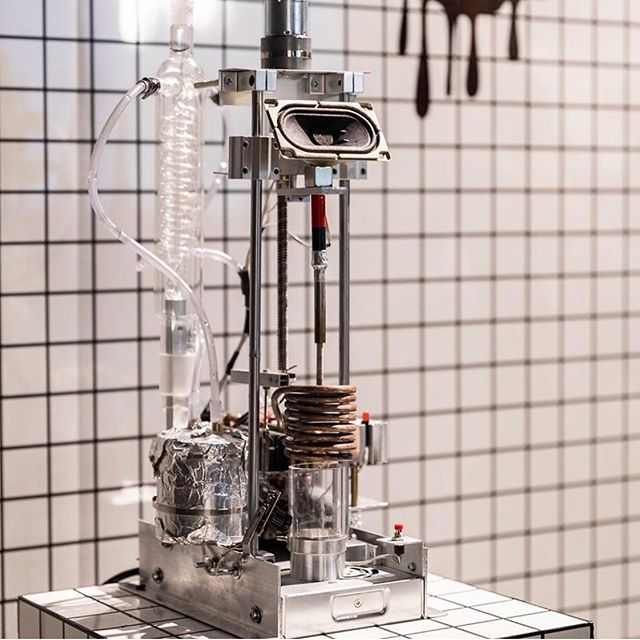
OCTOBER 5 – NOVEMBER 4 / SMALL EXHIBITION HAL
On October 5, the Zarya Center for Contemporary Art will open the multimedia installation, Guest, by one of the most world-renowned Russian artists working in the field of science-art, Dmitry Morozov, better known by his pseudonym, ::vtol::.
Morozov's practice explores sound, light, society, the internet and all the possible means man has of mastering the world around him. In Vladivostok, the artist will present a kinetic, electromagnetic sound installation, dedicated to the Sikhote-Alin meteorite, which fell in the Far East in 1947 According to the artist's concept, the cyclical system models the moment the meteorite “arrived” on earth – an extremely elusive and rare event.
As the artist explains, “The main impetus and inspiration leading me to the creation of this work was the addition to my geological collection of a few individual fragments of the Sikhote-Alin meteorite, which landed in the Far East in 1947 This meteorite was unique for a number of reasons. For starters, it was the largest iron meteorite in recent history. Witnesses of its descent were myriad, including the artist Petr Medvedev, who was painting en plein air at the time of the fall and was able to capture his experience on canvas. The resulting painting was very popular in the USSR. This is the most studied of any of the objects that have ever fallen to the earth, and yet tiny shards and individual fragments can still be found around the point of impact.”
“The unbelievable allure of these rarest of ‘guests’ from the cosmos immediately inspired me to develop an artistic research project, involving some of what I find the most interesting trends in the sphere of technological art: natural and artificial electromagnetism, work with sound, robotic automatized systems, geology and astrophysics. Each of these aspects are not only a means for reaching a unified artistic expression, but also a powerful medium, in and of themselves, forming a synergy of individual elements within the work. The realization of this work is not limited to the creation of the object itself, but also includes taking the piece to the Meteorite Village, not far from the site of impact in the hills of Sikhote-Alin.”
“The culmination of the project is the setup of a functioning installation in one of the craters left from the crash of the pieces of meteorite fragments. This offers its own means of recreating the moment of impact directly on the spot where the meteorite hit the earth. This kind of journey can rightly be thought of as a pilgrimage/research trip, together alongside the filming of a short documentary film dedicated to the whole process.”
Dmitry Morozov (born 1986, Moscow) realizes his artistic ideas through technological genres like robotics, sound art, and science art, exploring the themes of chaos and self- organizing systems, and analyzing social, biological and physical phenomena. The artist also designs and creates experimental musical instruments and modular synthesizers. He has participated in the 4th Moscow Biennale of Contemporary Art, the Archstroyanie Festival, The Night of New Media, CTM/Transmediale (Germany) and Ars Electronica (Austria.) His works have been exhibited at leading institutions for contemporary art, including the NCCA (his solo exhibition “Interface of the Ongoing,” was on view through September 29), MMOMA, Manezh, the State Hermitage Museum, Laboratoria Art&Science Space, Electromuseum, the Polytechnical Museum, the Garage Museum of Contemporary Art, ZKM Zentrum (Germany), the Boulder Museum of Contemporary Art (USA), and the National Taiwan Museum of Fine Arts (Taiwan). He was previously featured in Vladivostok in the group exhibition “Misadventures of Discovering” at the Hlebozavod Center for Contemporary Culture. He is the award winner of the Sergei Kuryokhin Prize (2013), Prix Cube (France, 2014) and also received honorary mentions at VIDA 16 (Spain, 2014) and Prix Ars Electronica (Austria, 2015, 2017).
This work was produced with funding from a grant from NOVA ART, received as part of the NOVA ART CONTEST.
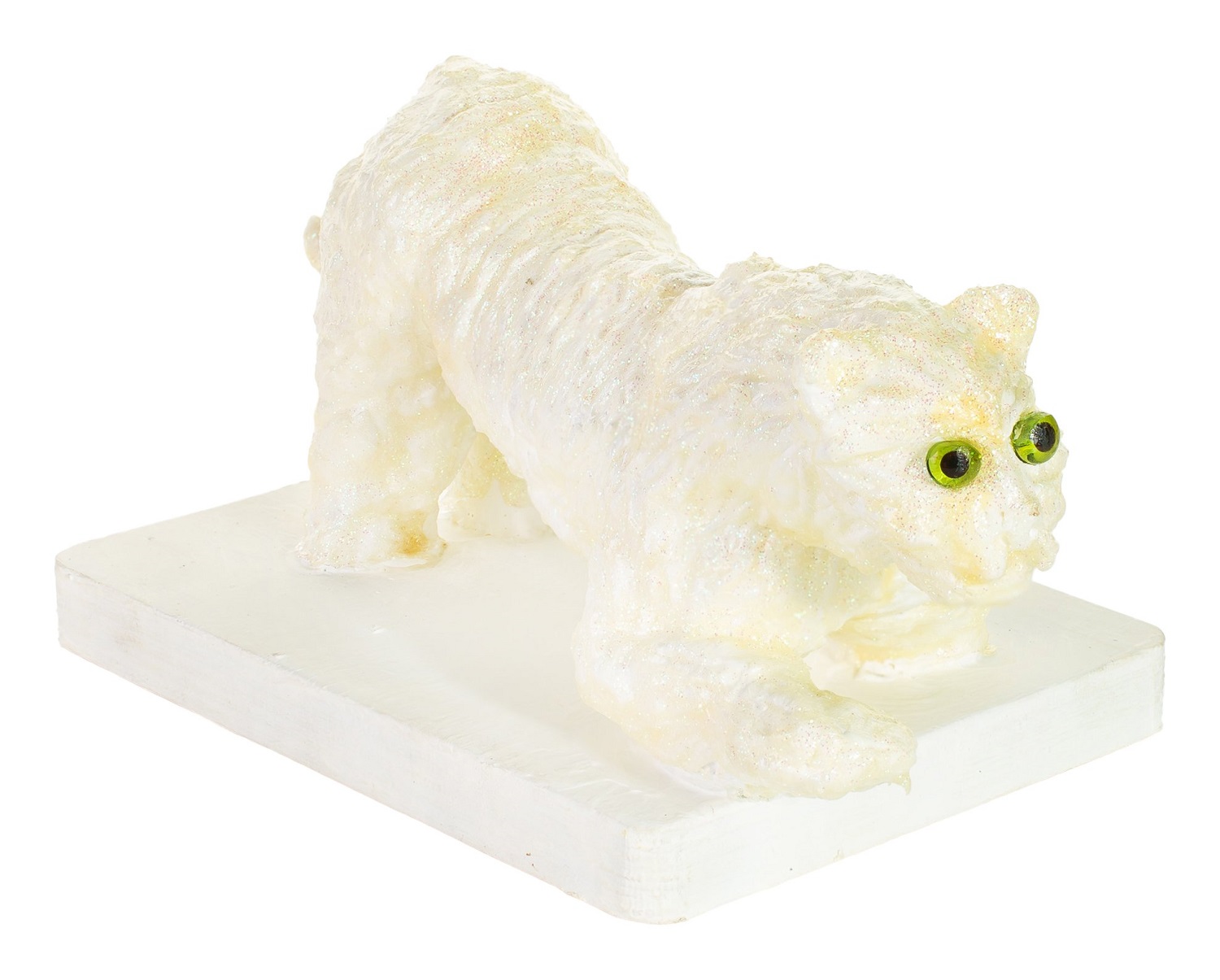
The Zarya Center for Contemporary Art will show a selection of works from its collection, built up over the past 5 years of the artist residency program.
Since the moment it launched in December 2014, the Zarya artist-in-residence program has welcomed artists from 17 countries to realize more than 80 proposals, dedicated to rethinking the local geopolitical, social and cultural landscape. On March 2, the Zarya Center for Contemporary Art will open the exhibition “IN RESIDENCE: From the Collection of Zarya Center for Contemporary Art,” which selects from the creative proposals and art works created by artists during their residencies.
Throughout its tenure, the Zarya Center for Contemporary Art has seen its mission as increasing Vladivostok’s significance as a point on the map where creative life is flourishing. Zarya strives to serve as an independent platform for creative production and a professional dialogue about art. The artist residency program has become a key instrument for attaining those goals. Thanks to the open format of the residency, Zarya has managed to bring together the resources of many artists and researchers to unpack the manifestation of the local landscape within the discourse of contemporary art. Among those who have participated in the residency and whose works will be on display in this exhibition are Dmitry Bulnygin, Irina Zatulovskaya, Olga Kroitor, Sergey Shutov, Hong Jinhwon (South Korea), Fabian Knecht (Germany), Elizaveta Konovalova (Russia, France), Alexander Morozov, Natalya Pershina-Yakimanskaya (Glukyla) (Russia, the Netherlands), Elena Redaelii (Italy), Ма Haijiao (China), Sarah Hillebrecht (Germany), Sarawut Chutiwongpeti (Thailand), the collective, Searching Utopia (Finland) and many others.
The first exhibition from the Zarya collection gathers works that are dedicated to the Primorsky Krai in one space in order to forge new links between the artistic approaches of the residents to the study of the territory, culminating in the creation of a new “portrait of the place.” The perspectives from which the artists consider Vladivostok and the Primorsky Krai are not just aesthetic; in their projects, the artists raise many important social, historical and ethical questions. Among the selections are works reflecting on the theme of the specific features of the region’s natural landscape, the history and memory of the Gulag, the history of the Zarya factory and the women who once worked the sewing machines, the contemporary urban environment and social boundaries.
The presentation of this collection results not only in the spectacular display of the results of five years of work, but also in a means to evaluate those results critically. The audience can get to know this portrait of Primorye, created by Russian and international artists alike, up until May 26.
Exhibition Curators: Alisa Bagdonaite, Andrey Vasilenko, Adel Kim
Participating Artists:
Dmitry Bulnygin (Russia), Sarawut Chutiwongpeti (Thailand), Tatyana Efrussi (Russia, France), EVOL (Germany), Alexander Florensky (Russia), Olga Florenskaya (Russia), Ма Haijiao (China), Leif Holmstrand (Sweden), Sarah Hillebrecht (Germany), Hong Jinhwon (South Korea), Fabian Knecht (Germany), Elizaveta Konovalova (Russia, France), Olga Kroitor (Russia), Sasha Kurmaz (Ukraine), Lyokha G. (Russia), Alexander Morozov (Russia), Anastasia Potemkina (Russia), Natalya Pershina-Yakimanskaya (Glukyla) (Russia, the Netherlands), Elena Redaelii (Italy), SASHAPASHA (Russia, Finland), Sergey Shutov (Russia), Anastasia Tsayder (Russia), Mikhail Zaikanov (Russia), Searching Utopia (Finland), Irina Zatulovskaya (Russia).
%20-%20%D0%BA%D0%BE%D0%BF%D0%B8%D1%8F.jpg)
SEPTEMBER, 3 – OCTOBER, 1 / SMALL EXHIBITION HAL
Andrey Dmitrenko's latest exhibition takes its name from lyric poetry. In the Russian version of the title, the use of the informal personal pronoun “you” connotes a certain proximity, and even intimacy to the subject, but the addressee itself remains unknown.
“You” could be the viewer, who navigates the exhibition, slipping into contemplation and losing themselves for a moment, only to be brought back by the sound of their own footsteps.
“You” could be the work, which always brings its own intonations and “noise” into the space around it.
The artist prefers to work in mixed media, contrasting the textures and characteristics of various materials, from metal, to textiles, to paper. And these contrasts always have a moment of chance about them: it is never exactly clear where the artist’s hand has intervened, and what are just the natural properties of the material. In any case, with his interventions the artist emphasizes these properties, making them resonate, until that they literally become “noise.” The viewer is then called upon to continue the artist’s process through their contemplation of the work.
The transitions from one material to another can also be seen as a means to shift from seeing to listening. Sound is one of the main components in Dmitrenko’s works. The viewer might see the fragments of striped fabrics used in some of the artist’s canvases and connect them to his or her own experiences and memories of bedsheets. In this sense, the artist “activates” a kind of sleep mode, like the curious phenomenon when one is dreaming, and auditory sensations trigger images.
The dimensions of the works are often not very large. They do not presume to completely take up the space. Their status is never clear: on the one hand, they are, of course, images, but on the other, they are objects with an unknown origin and an undefined function. They do not impose themselves on the viewer, who must still discover them, recognizing them as works of art and locating them within “this little landscape.” If we think about the function, then Dmitrenko’s works are like tuning forks – instruments for measuring the intensity of sound in an enclosed space.
With their horizon lines and two or three planes, the suite of works from the “Storm” series can be considered as landscapes – albeit, very unstable and provisional landscapes. All the fits and fury of their internal storms seem either to have already passed, or, conversely, to constitute the very substance of the storm, not in the visual sense, but in terms of the intensity of the experiences.
If we are to speak of tradition, then the works of Andrey Dmitrenko pick up on the history of music within minimalism – the experiences of organizing sounds of different origins, as well as integrating these sounds into a musical fabric.
Kirill Svetlyakov